– Welcome, everyone to Wednesday Nite @ the Lab. I’m Tom Zinnen, I work here at the UW-Madison Biotechnology Center. I also work for the division of extension here at UW-Madison. And on behalf of those folks and our other co-organizers, Wisconsin Public Television, the Wisconsin Alumni Association, and the UW Madison Science Alliance, thanks again, for coming to Wednesday Nite @ the Lab. We do this every Wednesday night, 50 times a year. Tonight, it’s my pleasure to welcome back to Wednesday Nite @ the Lab, Mark Burkard. He’s with the School of Medicine and Public Health in the Department of Medicine. He’s also with a Carbone Cancer Center. He was born in Buffalo, New York, and went to high school there at Williamson North High School. And then he went to SUNY Buffalo, and studied mathematical physics.
And as I said to him, “Is there any other type?” (man laughs heartily) Then he went to the University of Rochester to get both his MD and his PhD in chemistry. And then he became a resident at Cornell Weill Hospital in New York City, and then moved over to Memorial Sloan Kettering for an oncology residency, fellowship, excuse me, in New York City, and then he came here in 2008, UW-Madison, and tonight, he’s going to talk with us something pretty near and dear to my heart, ’cause I went through this personally with my dad about 10 years ago, the whole issue of somebody that you know, love, gets a cancer, and they can’t seem to be quite able to figure out what it is. And I think if this were to happen now, instead of 10 years ago, things might have worked out a little bit different. Tonight Mark’s going to talk with us about transforming cancer treatment with precision medicine, please join me in welcoming Mark Burkard, back to our Wednesday Nite @ the Lab. (audience applause)
– Thank you, pal.
– Thank you.
– Thank you, Tom, and thank you all for coming out tonight. It’s a pleasure to be here tonight and to talk about some of the things we’re doing in precision oncology and how we’re trying to embody the Wisconsin Idea by reaching out to the state and doing so. So the fundamental basis of what I’m going to talk about today is this, how do we classify cancer? And as a medical oncologist, we differentiate ourselves and our patients, primarily by a over 100-year-old idea, which is, we classify the cancer by where it started from in the body. And that is very important, especially if you’re thinking about surgery.
So if you’re a surgeon, how you operate on the the lung, or the colon, or the breast, is very different. And so when you’re classifying it by what type of surgery you’re going to do, it’s very important to classify it by where it started in the body. But that was a very old idea that y’know, hearkens back to the 19th century. I mean, we had breast cancer, going back hundreds of years, and lung cancer, and colon cancer, we knew about these diseases, and surgeons have been operating on them since the dawn of anesthesia, and sometimes, sadly, before. But we also now know that we can do much more with medicines for these cancers. And so it’s now, all but suddenly, becoming more and more important to classify these cancers, not just by what organ they started in, but by the genetics, what are the genes driving the growth of each individual cancer? And as I’m going to show you tonight, it’s highly variable, what genes you find in an individual person’s cancer. So let’s talk about a case. So I think about patients I had clinic today. This wasn’t my patient, but it’s something like what many of us oncologists see in clinic. So imagine we have Miss Jones, she’s a 67-year-old, she had blood in her stools, it turned out, unfortunately, that this was colon cancer, and she was treated with surgery.
So while we hope that many of our patients do well, unfortunately, as with many of our patients, a couple years later, something else happened. A blood test was abnormal, they found a tumor in her liver, and biopsied it and showed that this was the colon cancer back. So this is where patients many times come to the almost exclusive care of the medical oncologists. And we’re faced with, y’know, what do we do? And if I look at any guideline, what we do is we start to classify her cancer. So if we classify it by colon cancer, you have metastatic colon cancer, I go to the guidelines and I have a list of drugs that are approved. And there’re standard chemo therapies that have been around for, in some cases, quite a while, such as 5-fluorouracil, discovered by Charlie Heidelberger here at the University of Wisconsin, so shout out to UW there, but we also know that if we look and we start to uncover the DNA inside Miss Jones’ tumor, we may find a specific set of driving genes specific to her cancer, that’s not necessarily common to all colon cancer. And sometimes, as I’ll show you, those genes may be more common in a completely different type of breast cancer, such as breast cancer, but found in Mrs. Jones’ colon. So the idea here is if we can actually peer inside each patient’s cancer, maybe we can be smarter about choosing the therapy, maybe we don’t simply go to the guideline for colon cancer, but we look for what is useful for her. So I have to back up here because often I get contacted by people after these talks that y’know, “I have a friend or a colleague, who has stage two breast cancer, should we do precision medicine here?” And what I want to say is for the routine use in the clinic today, this is being used first in people with metastatic incurable cancer, because a lot of this is done under the research, and if we have a patient with early stage breast cancer, or even advanced cancer, that can be cured with a standard approach, we don’t really want to skip that.
And we only want to embrace this approach in the setting of very careful clinical trials that show we help people without hurting them. But in patients, and we have many with metastatic cancer, this is something we seek to implement today, as I’m going to show you. Also, what I should tell you, is tomorrow, we hope to integrate this in early stages, we learn more about our precision approaches and precision therapy, we are moving these into early stage cancer but in a very stepwise approach. So when I talk to patients and families, I have to be very careful about talking about DNA tests. And when we’re dealing with someone with cancer, we’re dealing with two basically two sets of genes, one is from the person, called germline, and one is from the cancer, called somatic. So what do I mean by that? So the germline is the genes in all your cells in your body that you inherited from your parents. And usually we test that by taking blood, you can take saliva or anything else, but all of our cells in our body have those genes, so you could learn by testing those genes, what you’ve inherited from your parents, you could find out, “Do I have a gene I inherited from mom or dad that predisposes me to a cancer or another disease?” And you can use that primarily, the major use is to find out that, “Gee, I have a risk of prostate cancer, maybe I should have screening more,” for instance, so that’s germline. But what I’m talking about today mostly is somatic. What are the genes driving the unique growth of the tumor? And it turns out our tumors, when we get cancer, are us, they have everything we inherited from our parents, but then some more changes have occurred to drive the growth of those cells in an abnormal way. So today, what I’m talking about is the somatic mutations, or the mutations that are driving the growth of the tumor that may not be in the rest of the person, I might not find that very well in blood, but I can do a test of the tumor.
And I can find what genes are driving the growth of each patient’s tumor. And by doing that, I can find, potentially, ways to turn off the growth of the tumor with medicines that turn off the enzymes that those genes encode. So that’s what I’m talking about today, I really talking about these somatic mutations in patients’ tumors that often are very different from what they inherited from parents. So why are we talking about this today? We’ve known cancer is a genetic disease for decades, okay, so it’s really no mystery, but why are we just starting to y’know, get smart enough to look inside each patient’s tumor, to find what drives it? And basically, the driver is technology. So technology has changed, such that we can now rapidly sequence people’s genes and their tumors. And if you recall, I don’t know how many of you recall this, but in 2001, of course, there was a great announcement, we had the Human Genome Project completed, cost 100 million dollars, took over 10 years, they used basically an updated version of the 1978 Sanger sequencing technology, but to do it on a massive scale. So what the NIH did next, in 2001, is invest in technology in developing new tools in sequencing technology that could do this at a massive scale, such that now what cost tens of thousands of dollars in 2001, cost pennies for the same amount of DNA sequencing information. So what this is saying, this is a mega base, so if I want one million base pairs of your DNA sequence, I can do that for under 10 cents now. So this is why we’re getting to this today. So how do we do it? Well, usually what we do is we work with our friends in pathology.
Our tumors under the microscope might look like this, for example, where we see a lot of cells, sheets of tumor cells that have grown from the biopsy, we take and extract the DNA from that, we can place it on these chips, often different technologies are used, this is an alumina chip, which is one of these massive sequencing technologies that can sequence a lot of DNA at low cost, there is technology that uses DNA bridges and copying using an enzymatic approach, and you get millions of reads of DNA. So we could do that with our patients’ tumors and look inside each patient’s tumor to find what’s driving its growth. So we find the genes that drive the growth of the tumor, and then we have to use that to try to help our patient, and this is where it can be challenging, for many reasons, but one reason is, y’know, it’s hard for oncologists to keep on track of the new drugs for colon cancer, and breast cancer, and everything else, but now you have this whole other dimension of now you have to learn about all the genes that are driving the growth of cancer and what you can do about it. So as part of what we like to do at the University of Wisconsin, which is serve the people of the state of Wisconsin, we set up what we call the Precision Medicine Molecular Tumor Board. And we got all the relevant experts from UW-Madison and from collaborating oncology practices around the state, and we set up a web conference. And what we allow is any physician who does this test for any patient anywhere in Wisconsin, free of charge, can submit the test result to the Tumor Board, has the option of calling in through the web conference, and get a recommendation of what you can do with that information. So we look at the DNA sequence, we try to figure out the mutations we’re seeing are actually just there or are actually driving the growth of the cancer. If they’re driving the growth of the cancer, we look at whether there are medicines that can be used to turn those enzymes off. And sometimes, but not always, we do find things. So we send to each physician a recommendation letter.
So everyone gets a letter, it tells them whether there’s a clinical trial of a drug that can be specific for the patient’s tumor, whether there is another treatment, or in many cases, frankly, we don’t find a treatment. So there are many genes that we know drive the growth of cancer that we don’t have drugs for that are very challenging drug targets, some of which, because they’re turned off. So y’know, we have two kinds of cancer genes, we have those that are turned on, those are ankA genes, they get mutated, they turned on and the enzyme is high. So you can turn them off with a drug, that works pretty well. But the other set of genes are things that get broken and turned off when they’re mutated. And when those get mutated, there’s really not a drug to turn them back on. So this set of genes is much harder to target. So we find both kinds, in all our patients almost, but in a small fraction of patients, we have a very good drug. To show you how complicated this gets, I just want to unveil what it looks like. So this is a picture from a paper we published a couple of years ago, this was the first y’know, 30 or 40 patients who were part of our Tumor Board.
And each row is a different patient whose tumor was analyzed by DNA sequence. Each column is a different gene that’s mutated, and what you see is just about every row is different. Every patient’s tumor has a different set of mutations, I would challenge you to find two rows here that are identical. And what you also see is, although some genes are common, the one at the far left is called TP53, or the classic P53 tumor suppressor, that’s one of those genes we can’t, it’s broken off, so we can’t turn it on. But we can find some other genes less commonly mutated in patients. And at the far right, you see, there’s about half a dozen patients of this whole group, that we’re able to find a drug. So we realized pretty quickly that we were only going to help a small fraction of patients, but if we help them a lot, it might be worthwhile. But we wanted to challenge ourselves to help more patients, so we didn’t want to just help seven of 35 patients, and we knew what we needed to do is not just have the standard FDA-approved drugs, but work with researchers and pharmaceutical companies all across the the world, to bring the latest drugs, the best drugs that are for specific genes into the clinic. So we had this idea that maybe we could help a lot more of our patients if we did this, if we set up a system where we could test as many patients as possible, and maybe we would find the the patients that would match a drug. And this was a hard thing because if you look at the bottom, people call these basket trials or baskets, where you have genes like NTRK or ERRB2 or FGFR, that are mutated, maybe in a tiny fraction of patients, 2%, 1 to 2%.
If you have enough of these baskets, it adds up and you help a lot of patients, but each basket and each trial is only going to help a small fraction of patients. So what we realized pretty quickly is if we did this testing for as many patients as possible, and we’re screening thousands of patients for these tests, then we could work with these companies and get the drug, the best drugs for our patients, for that 1% for this, for 1% for that. If we couldn’t do this widely, if there were too many barriers, and we’re only testing say 50 or 100 patients a year, this whole process would fail, this would fail because we’d only get, one met a year. And so we would never be able to bring that trial to Wisconsin. So this depended on broad implementation of testing to help as many patients as possible. Now, so we realized we were kind of in this catch-22, this chicken-and-egg problem where we could help more patients with the latest drugs that are being developed, but we could only do that if we were testing as many patients as possible. So we would go to the pharmaceutical companies and we would say, “Would you do this, are you interested in working with us?” And they say, “Well, how many patients are you checking? If you’re checking enough, it’d be worthwhile. ” And then we go to the doctors and we say, “How come you’re not doing this testing on all your patients?” And there were there were a number of barriers, but they’re like, “Well, a lot of times I do these tests, and I can’t do anything to help my patients, so why should I do it?” So it created this chicken-and-egg problem that we felt like we had to break down the barriers to doing this testing to make it easy for physicians, and we identified a lot of barriers. So over the years, y’know, the routine in clinic was just that when the doctor decided to do a test, they would y’know, try to run it. And the doctor and the nurse would do a lot of paperwork, maybe the patient would get a big bill for running the tests, and we discovered that there were four main barriers that we needed to break down to make this routine, and so we set out to break down each one.
The first one was the clinic flow. So I have a clinic with about 40 partners and maybe 50 nurses. And so when the doctor wanted to run a test, the doctor would turn to a very busy nurse who was getting phone calls and barrages of things from other patients and saying, “I want to do this test, let’s fill out the paperwork. ” That nurse would find the five nurses in the clinic who are familiar with that, they would try to run that test, and then it would get run, and that one patient and the doctor would know about it, and it wouldn’t be shared across the group, so they’d only be known to them, they wouldn’t know what anyone else is doing. So what we decided to do is centralize it. And in the late 2017, with the support of the Cancer Center director, we were able to hire staff, first Kayla Lemmon, and then Hannah Houtler, who were able to help overcome this. And I very distinctly remember my meeting with the nurses because I met with all the nurses and I said, “You aren’t going to need to do this anymore, we’re going to do it for you. ” And they looked at me dumbfounded ’cause they’ve never been asked to do one thing less. And actually, they didn’t believe me. What they said was, “Okay, what’s the catch? (audience laughing) What are you really asking here?” But what we did, by taking that on and saying, “We’re going to take all this paperwork away from you and just do it, all you need to do is let us know.
” And once we did that, we knew every patient was being tested, we could centralize the process, we could coordinate with our clinical trials, and we had over 20 patients a month that we could test. But we also, as we were going through the process, we noticed other problems. So we broke down that barrier by giving away some help. The next problem was dealing with payers. So the way insurance companies work is they don’t really support doing a lot of tests on patients, and maybe they shouldn’t, until that test has been proven to improve the outcome of enough patients. And so, what we’re doing today is we’re helping small fractions of patients profoundly, as I’ll show you, but we’re not helping like large fractions of patients, until we get these drugs developed. And so, as an academic center, we said, y’know, we can’t deal with this, like we can’t be charging patients hundreds and thousands of dollars, who’s going to want to have this test? And yet if we don’t do the tests, we can’t have this program. And insurers weren’t ponying up, and as you know, in medicine, we deal with many different payers. So even if this insurer will cover it, we’re dealing with dozens of these companies. So that was a huge time sink, trying to organize and work through that.
So what we decided to do, we had the opportunity to work with the company out of Ann Arbor, Michigan, so these are not bandit Badgers, they’re Wolverines, but they were quite helpful. And Scott Tomlins and Dan Rhodes set up this company, and their idea was, like the problem with doing this testing and developing the drugs, is we can’t do the testing ’cause the insurance companies don’t pay for the testing, ’cause we haven’t proven the testing is useful yet. And so what we have to do is get the drug companies to pay for the testing. And we’ll make them pay for the testing so they can develop their drugs. So they set up this network across the country, we implemented this widely, both at UW Carbone Cancer Center, and got them integrated with many partners around the state, And so they pay for the testing for our patients, and the catch for us is we are expected to, when we find a match for one of these rare patient populations, to let the patient know there’s a clinical trial available and do the work to bring it here to Wisconsin. So it created this win-win situation where we could get–we didn’t have to deal with payers. So we broke down that barrier and we were able to test everyone without charging patients hundreds of dollars, or dealing with insurers, which was a nightmare. So the next thing we ran into was this, so pretty soon, we were calling the pathology lab multiple times a day and say, “I need you to go find this biopsy sample from this patient from March 25. ” And the pathology department, what they do is they take all the biopsies and surgical specimens, they put them in paraffin-embedded, formalin fixed blocks, and there’s a huge library there. And this library goes back at least 10 years, they’re, by national guidelines, required to store these 10 years, and ours goes back further.
And so we had it all these librarians, so to speak, running around getting these blocks from dozens of patients down in pathology lab. And pretty soon they got upset at us, because it was eating up all their time and they’re like, “Well, we have patients who are getting surgery now we have to do that, we have to take care of them. ” So we said, “Okay, we have to get over this. ” So this is some of my wonderful colleagues in pathology, Christina, and Daria, and William, and Stephanie, and they worked with us and we were able to provide some money to have another librarian. And so we have our special librarian, that we pay for, that goes through the libraries like that, those drawers of blocks that you see down there. And not only that, but Daria, and Christina, and Stephanie, have to look at each slide before we send it out and make sure it actually has adequate tumor to do DNA testing. So they’ve been wonderful colleagues making this work. So we’re able to break down that barrier. And then finally, the last problem was, okay, we’re going to find the, y’know, now we got everything working, we’re going to screen hundreds of patients a year, maybe get over 1,000 at UW, and now we have to bring the clinical trials. But all these trials are for a small fraction of patients, so which one do we bring first, we can’t open a dozen clinical trials all at once, ’cause they take a lot of work for each one.
So what we did was, first of all, I got a wonderful team, my colleague, Nataliya Uboha, and Jen Collins, who’s the manager, we created a new research group in the Cancer Center, called the Basket Group, to open these trials, and we challenged ourselves to reimagine clinical trials. So usually, when you run a clinical trial, there’s a lot of steps to get started. So usually, we work with a sponsor, often a pharmaceutical company that has developed the drug, we do contracting, budgeting, we do a scientific review called PRMC, we see whether it’s compliant with the insurers and payers, and then we go through the institutional review, the Ethics Review Board, they review it, then it goes to a national ethical review board, called the Central IRB, or CIRB, then it goes to pharmacy and they create all the order process, and then we activate the trial. So this takes three to six months for each one, typically. And then we start waiting for the patient to show up. So the patient may or may not show up, but if, in these rare patient populations, if we’re not screening enough, it may take months to find that first person who needs that. So we said, “This just isn’t going to work. we can’t do this with a dozen trials, and then wait for the patient to show up. ” So what we did was we reimagined it, we met with each group among those, and we said, “What if we do this, what if instead of having the patient at the end, we do the minimum amount of upfront work, and then as soon as that patient shows up, we want you to commit to doing all these reviews as quickly as possible, in time to help this patient. So that we can find the patient for this particular trial, and we can work with you, and we want you to get it done in less than four weeks so we can treat that patient and help them.
” And with their help, we were able to do that for the first time, it was the fastest trial opening we had, was one of the trials we did last year, took about four weeks from finding the patient to getting the first patient treated. And it turned out the research nurses loved it because usually, they get trained on a research protocol, and then a patient may or may not show up six months later when they might, or might not, remember their training. But with this process, they were trained, and then the patient was right there, so they used the training right away. So that broke down that barrier. So we felt like we were finally in a position where we could get through this chicken-and-egg problem by breaking down all these barriers to start doing testing on all our patients without charging them and bringing the drugs that they need for each different gene. So again, the challenge of precision oncology is there’s so much diversity in tumors, you have to do a lot of work, there’s not one solution, you have dozens of solutions, and you have to be prepared to deliver all of them at once. So that’s how we set up that program. By doing this, we’re able to serve patients from all over the state. So this is where patients came to our Cancer Center to be tested. So these are the patients that came to UW Cancer Center and then have the testing done over the past year.
We’ve had many other patients tested at our collaborating sites that aren’t included here, but as you see, this serves pretty widely the region. And if you look at who was tested over the past year, it’s, again, a very diverse set of cancers. So we’ve tested a lot of colon cancer, lung cancers, breast cancers, but the whole battery of the solid cancers, that can occur in patients, have been tested. So we’re just serving a lot of diverse clinics and patients. We also thought that it’s great to do this at UW, but as the state university and with the Wisconsin Idea, we wanted to reach other patients. And we didn’t want to tell patients, they have to come to UW-Madison because although we love to see patients, we probably couldn’t see everyone, and because it’s a hardship on patients. So we wanted to work with their oncologists, in their community, to deliver the same level of precision oncology. So we got these collaborators from around the state, Ben Parsons, in Gundersen, Ruth Warren at Green Bay Oncology, Mike Thompson in Aurora, Matthias Weiss, in Theta Care, and Timothy Goggins at Fox Valley, and we’ve recruited others since then, so we could reach out to the entire state. And we said, “For free, you can submit these cases to our Tumor Board and we’ll connect you with the Strata Oncology if you want to work with them to get free testing for your patients as well. ” So this has rapidly taken off, last year, was when we got finally broke down all those barriers, and through our Tumor Board, we reached almost 1,000 patients coming through getting a recommendation.
That doesn’t mean we have found a drug for all of them, but we certainly found treatment, new treatment options, for many of them. And in 2019, we’re on target to have well over 1,000 patients through this. And as you can see from the map, these patients come from all over the state and health systems all over the state. So what does this mean? Can I give you an example of some patients who came through this process? Well, first, let’s reimagine Ms. Jones, we talked about Ms. Jones, she had this fancy DNA testing of her tumor, and maybe, for instance for her, we would find, in colon cancer, a mutation in a gene called PIK3CA. So that test result would be submitted to our Tumor Board. If it happens at our cancer center, it’s automatically submitted, other cancer centers, they can submit free of charge through a secure portal, and we would look at what we could do for her. But how do we determine what treatment to recommend? What do we do there, what’s happening in the Tumor Board? So I just want to unveil what we do a little bit. So how do we determine whether Ms.
Jones’ mutation matches a drug? And so, for example, one thing we can do, in her case, what we found is PI3-kinase mutation at E545. And so what this is, is a map of the protein, that PI3-kinase protein, the different domains on that protein that have known functions. And then this is called a lollipop diagram, and what it looks is publicly available data on all the mutations ever found in cancer on this gene. And what you can see is there are many mutations at the E545 position, at 545. So we can use that information to say, “Okay, since this is found really commonly in cancer, it’s probably driving the growth of many of these cancers. ” We can also take that information and bring it back to the lab. So if it’s E545, that’s mutated to an A, for example, we can look at how that changes the behavior of this enzyme in a biochemical assay, or cell-based assay. And for exam, this gene, PI3-kinase, is a well-known cancer gene, and there’s even a crystal structure, so we can map what would happen to the crystal structure as right down in the bottom right corner, that that amino acid is mutated, and we could see how that’s driving the broken “on” switch, if you will, of that enzyme. So, as I said, what we find, and one of the challenges of precision oncology, is many drugs are only going to work in a tiny fraction of patients, but if you keep looking for enough patients, you find some that you can help a lot. So, for example, in breast cancer, we’ve found mutations in ERBB2, also known as HER2, that we have drugs and clinical trials for, so we’ve enrolled a number of patients on treatment for that.
We’re working on clinical trials for patients who have estrogen-resistant breast cancers, that happens through mutation of the estrogen receptor encoded in the gene ESR1, so that’s a common mechanism of resistance. We found those patients, we found a patient who was referred to us with breast cancer, who had an EGFR exon 19 mutation. Now, that’s a mutation that occurs in about five to 10% of lung cancers and 0% of breast cancers. So we think her cancer was actually misclassified as a breast cancer, but in any case, we have very good drugs for turning off that enzyme, and so we were able to repurpose that. We found a breast cancer, and this is extremely rare, with a gene called RET, which is an enzyme that another protein kinase for which we have very good drugs and clinical trials, so we were able to find drugs for that patient. There’s another protein kinase we found amplified, which means there were many copies in the genome of a breast cancer patient. And that’s very unusual to find, because usually we find that in lung cancer. And so, for example, this was a patient that my colleagues at Gundersen submitted to our Tumor Board. This is a patient who lived on a farm in western Wisconsin, and she unfortunately had this breast cancer. And as you can see here, on the panel A, the one on your left, this is a PET scan.
So what it shows is the glucose uptake, and at the top, you see her brain that should take up glucose. And at the bottom, you see her bladder, that’s where the glucose gets excreted when it’s injected, so that’s normal, but all in the middle, especially around her left lung, you can see there’s a lot of white there. And so she had a lot of cancer wrapped around that left lung and the pleura, and because she had a MET-amplified cancer, they gave her a drug that turns off the MET enzyme, and sure enough, about half a year later, what happened to her is shown at the right where the cancer was diminished, you see a lot less white around her left lung on the left. And below, if you look very carefully, you can see that same thing in CAT scans. Normally, the lung looks black on a CAT scan, because it’s full of air, and in the far left, what you see is the left lung is full of fluid and that goes away, that went away. So this was a patient that benefited from this, we would have never known to give this drug to a breast cancer patient without doing this. This is a very, very rare mutation. So one of the most interesting mutations are these genes called NTRK. So these are neurotrophin receptors that are usually found and expressed only in neurons. In a very tiny fraction of breast cancers, these genes are moved to a different spot in the genome by a mutation event, and then the new spot, turns it on and causes it to be expressed as a protein and turns on an enzymatic activity that makes the tumor grow a lot.
And when this happens, it causes cancer, but it’s very rare, these are found in about one in 1,000 to three in a 1,000 cancers. So you never find them unless you search a lot of patients, but when you find them things like this happen. So this was a patient my colleague met, who had a type of tumor called the GI stromal tumor, which is a rare type of sarcoma, and it may be hard to see under the light, but what you see is this is a CAT scan of her abdomen, sliced through like this. And what you see is this big soccer ball-shaped thing right in the middle, and that’s her tumor. So this tumor was out of control in her abdomen, she was extremely ill from this by June of 2017, and it hadn’t responded to any of the standard GI stromal tumor’s treatments. And this patient had a sample sent for DNA testing. And sure enough, this patient was one of the one in 1,000, who had the NTRK, and it turns out, we have a very good drug for that. And so this patient, that tumor melted away. So the tumor, you can barely see it, is the size of a golf ball between the two pelvic bones in the middle, and what you see is a normal healthy liver and a normal abdomen. So within a few months, the tumor had basically, dissolved.
And so she went from being very close to dying and going to hospice, which was her condition in June of 2017, to be a person who takes a pill once a day and is healthy walking around like us, which is an amazing thing. And she’s still doing well today, fortunately. So that’s one of them that, y’know, when I talked to my colleagues around the country, and some of us asked like me, “Like, why don’t you test everyone, because what if you’re missing one of these?” And they say, “Well, that’s so rare. ” And so there’s this unusual philosophy of, do we pay to test everyone and do we test everyone, do we do all that work to find one of these in a 1,000? And my answer is yes, I think we should do that in Wisconsin, and so that’s what we try to do. So another example of that is I had a patient, or my colleague Dusty Deming had a patient, where he found this unusual type of colon cancer. So this is a set of CAT scans through in his liver, on your left, and in panel A, you can see there are like these holes, that looks like Swiss cheese in the liver, the liver is the organ on the far left. And this patient came to Dr. Deming, was an elderly gentleman and he said, “Don’t give me chemotherapy. I know that’s standard for colon cancer, and maybe I’ll live a little longer, but for me, it’s not worth it. ” So Dr.
Deming said, “Okay, well, let me at least do, test the tumor as we do for everyone. ” And the patient had a gene that was amplified called HER2. Now this is usually found in breast cancer, so it’s about 20% of breast cancers, a smaller fraction of esophageal cancers, and a very tiny fraction of colon cancers, maybe a couple percent have this property. So because of that, he said, “Why don’t we give you the breast cancer drug? We know this works in HER2-amplified cancer, you basically have breast cancer that started in the colon, so we’re going to treat it like that. ” And sure enough, as you can see, in the second set of panels B, at follow up, the tumor regressed remarkably, and by three months, the CEA, which is a measure of how active the cancer is, it’s a protein that appears in the blood when cancer is active, it greatly diminished over time as we could see the tumor shrink. So this was another patient, skipped chemotherapy, had a great response. Now, these are not the common patients, I’m not showing you the most common, I’m showing you some of the best success stories. So I don’t want to oversell this and say we help everyone, but what we’re trying to do is find another set of treatments and to search, uncover turn over the stones for everyone so we can help as many patients as possible. So any of our patients, even if we don’t find something for them, they can still have standard treatments, we didn’t take that away, we didn’t even do anything to them, we just took a sample of the tumor that we already had and analyzed the DNA. So how are we going to use this going forward? So what we envision is a setup, where we start out with this statewide network, our vision and purpose here is to get everyone tested so we can help as many patients as possible.
So we want to break down all those barriers and help all our colleagues and help every patient, every cancer patient with incurable cancer around the state. We want to keep track of these patients, so for example, if we have a new drug, there’s a new drug for a gene called KRAS that’s very exciting, so we want to be able to identify all those patients that are out there when we get a new drug available, so we’re tracking ’em, and then we want to use that information of who our patients are to do clinical research, to bring new drugs to clinic and to help develop these drugs that are going to help these small fraction of patients by their genes. And then we want to work with our colleagues across the university to understand the biology. And so as we do these tests, we can annotate all the samples we have in the various banks that we have at the Cancer Center, and use those banks to work with collaborators across the university to understand the biology and be more strategic about how we do this in the future. So what we hope to do with this is find options for all our patients. I estimate we have about– I don’t know how many metastatic–how many people get metastatic cancer in Wisconsin each year. What I do know is about 4,000 people die of cancer each year. So that number hasn’t changed over the years. I think about 4,000 people in Wisconsin get metastatic cancer each year. And so what we’d like to see is all of them, we’d like to do this testing for all of them, to help as many of them as possible.
So this is something we’re doing today, but we’ve also thought a lot about how we might help our patients in the future. And I want to introduce you to a very, really interesting patient I met, Peg, who’s in the Wisconsin State Journal, so she’s okay me talking about her. As we’re helping patient, how are we going to help patients tomorrow, we have to learn from our patients. So Peg is interesting because she had breast cancer in 1978, and it recurred and became metastatic in the early ’80s. She’s alive today, and well, doing well, with metastatic breast cancer. Now most people don’t live 30 years with metastatic breast cancer, so there’s something very unusual about her. So if you think about this, this is what we see with breast cancer. So of all the people with breast cancer who come into our clinic, fortunately, when we do surgery or treatment of the breast, most of them live. About 80% of them, we never see the cancer come back and they live, but about 20% of them, on your right, have recurrent metastatic cancer, and most of them unfortunately die of breast cancer. But once in a while, there’s someone like Peg who lives with metastatic breast cancer.
And so we thought we could learn things from her about to understand why. Now what happens with metastatic breast cancer, so this is Gabrielle Rocque, she’s a collaborator at University of Alabama, she went through national database called SEER-Medicare, to find out how long people live with metastatic breast cancer. And as I told you about Peg, she lived over 30 years, but Gab will show you that about 99. 8% of people die of metastatic breast cancer within 20 years, so it’s a very unusual set of patients. So we began to ask, “Are there more patients like this here at the university?” And we were able to identify about 53, they had different types of breast cancer, they had different stages and diagnosis. If you look at their history, the earliest ones were diagnosed in 1978, and some others were diagnosed in the 1990s and had lived for many years with breast cancer. And we began to ask, “Okay, is there something about the genes driving the growth of their cancer that’s different than everyone else? Or is there something in their genes that they inherited from the parents, the germline, that makes them different?” And so we began to ask that. So I got some, again, wonderful collaborators, Rachel Yan, who was an undergrad here, now a medical student in Rutgers doing really well, Stephanie McGregor in pathology and Jen Laffin. And we said, “Why don’t we find these patients get their tumors, and if they’re willing to let us do DNA tests, we can learn what’s driving the growth of this cancer?” And so we did that, we were able to find about 14, where we were able to get tumors, and we tested all the 20,000 genes encoded in their genome, and we found many different mutations, but we didn’t identify a clear pattern. It wasn’t crystal clear to say, this is why these people lived for a long time.
So we thought it’s going to be challenging to answer this question with 14 people, there’s such diversity of cancers, we need to have a larger group of people than we can find at one cancer center. So we decided to use social media, and this is been kind of fun, because you start to use Twitter and things and you say, “Hey, you know, if you have metastatic breast cancer, would you like to help us understand how some people live for a long time?” So we did that, Peg was in the newspaper, people started contacting me from all over Wisconsin, then it started to go national. And we said, “Okay, let’s just find a way that everyone can participate. ” So we got a grant, we created a web page here, where our patients, people from anywhere can log on, and click the Participate Now, they can give us all kinds of information about their breast cancer history. Over the past year, we’ve had over 700 people sign up from all across the country, we have every state covered except Wyoming, I don’t know why not Wyoming, but we have everything else covered there. And we even had patients from international who signed up and said, “We want to be participate in this. ” So we got them to fill out, basically spend an hour filling out over 100 questions about themselves. But in partly to identify which samples that we could get from their local hospital to test their genes. I realized we had to visualize this data. And, there’s an emerging field called data science, so we ended up with these huge surveys on hundreds of patients, and so I said, “What am I going to do with this to you know, I want to, like, see the data and use it.
” So, but I didn’t just want to create an Excel spreadsheet and do it once, and then 100 more people sign up, I have to do it again. So I was very lucky to recruit Hengjiali Xu and Grace Joyce, and they’re programming R scripts. And so they program these scripts that automatically take the latest data we have from our cohort, who’ve signed up these surveys, and generate these graphs. So this is the graph like I showed you, from our, our small number of patients at UW, showing how long these patients’ histories goes. And so we have many breast cancer patients going back years and decades, and if you look from before 2000, we have over 100 patients who were diagnosed before 2000 with breast cancer and are alive today with metastatic breast cancer. So we’re able to find these patients everywhere. And Grace and Hengjiali kept doing more, they kept going and doing more and more, so this is information about where their tumors were in their body, and as you can see, it’s hard to read this, but far left is the patients who had metastatic cancer to bone, so that was the most common, but the metastatic cancer went to other sites. And then they began to examine what are the characteristics and habits of these patients? And so this is one example of one of the graphs they made, where we asked patients what their exercise was, do you exercise more, because many of the advocates around the country said, “Well, maybe people who exercise a lot live longer. ” So I’m not telling you not to exercise, (audience chuckles) that wasn’t my message, but Hengjiali and Grace, what they found was, there was no correlation with the survival, that’s not what drove survival, it looks like. So what we’re doing now is we’re picking these folks who are the longest survivors.
And Madelyn Sass, who’s going to be a medical student here, and Kayla Lemmon, who runs the Molecular Tumor Board, are doing a lot of work contacting these hundreds of patients across the U. S. and internationally, and trying to track down their tumor samples that are in some pathology bank in some hospital anywhere. So we’re spending a lot of time talking to patients and asking their permission to do that. So that’s all I want to tell you today, and so I just want to put this all in perspective of what I’m talking about just to give you a flavor of what’s happening in the Cancer Center, and how we’re reaching out to the state. What the Molecular Tumor Board is trying to do is to help as many patients as possible across the state, using the technology we have today, using the drugs we’re working on, to help as many people as possible. And so our goal is to help and reach every patient with incurable cancer. We also want to do more, we want to look forward to the future and not just use the technology and what the current knowledge, we want to learn from our patients. And Peg and these other long-term survivors with breast cancers, just one example of these unusual group of patients that we can learn a lot from. So what we hope to learn is how do you, to make more patients like them, to live well with metastatic cancer if we can’t get rid of it.
So with that, I want to thank you and I want to take any questions. I really appreciate your attention tonight. (audience applause)
Search University Place Episodes
Related Stories from PBS Wisconsin's Blog

Donate to sign up. Activate and sign in to Passport. It's that easy to help PBS Wisconsin serve your community through media that educates, inspires, and entertains.
Make your membership gift today
Only for new users: Activate Passport using your code or email address
Already a member?
Look up my account
Need some help? Go to FAQ or visit PBS Passport Help
Need help accessing PBS Wisconsin anywhere?

Online Access | Platform & Device Access | Cable or Satellite Access | Over-The-Air Access
Visit Access Guide
Need help accessing PBS Wisconsin anywhere?

Visit Our
Live TV Access Guide
Online AccessPlatform & Device Access
Cable or Satellite Access
Over-The-Air Access
Visit Access Guide
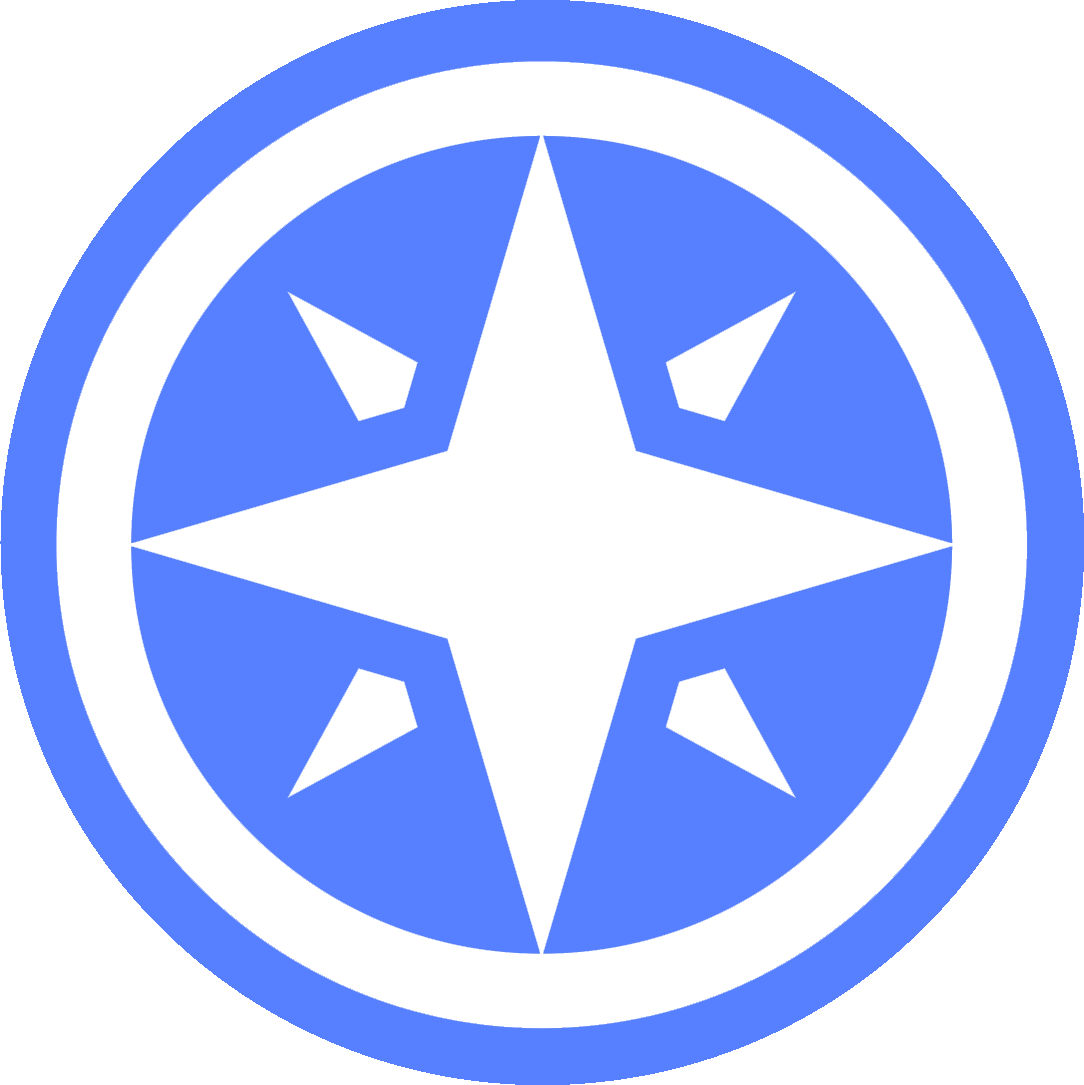 Passport
Passport

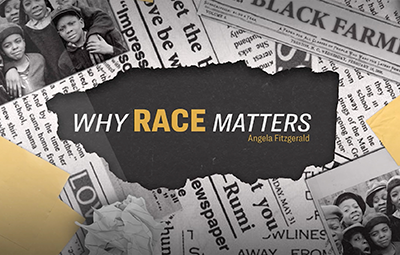





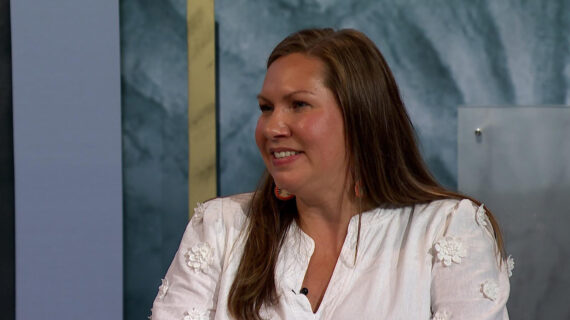
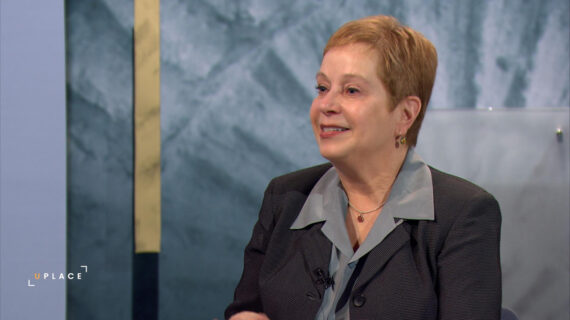

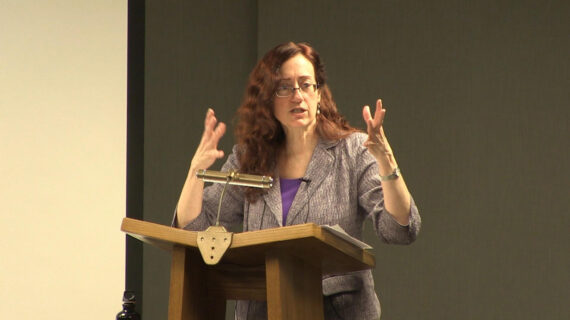
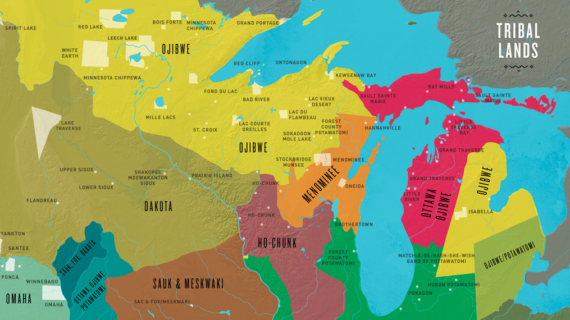
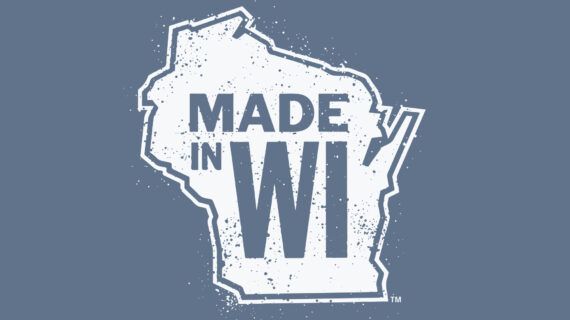

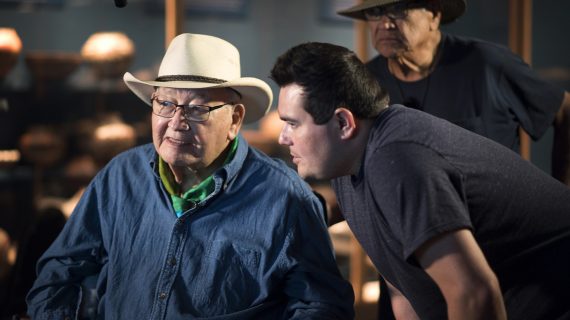



Follow Us